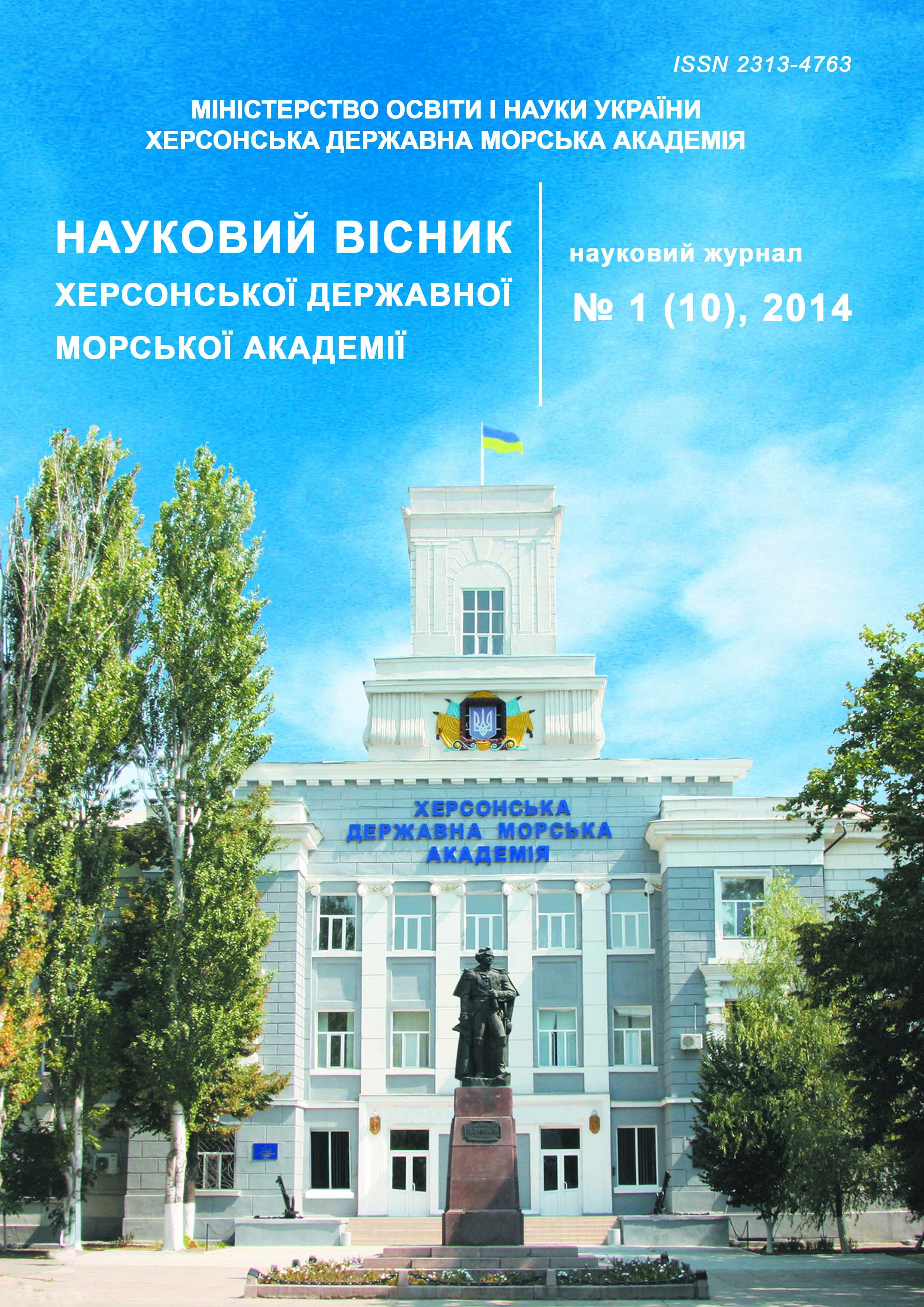THE TRAINER FOR MARINE ELECTRICAL MECHANICS
Abstract
Distributed control systems for marine power systems, in which the lower level consists of governor controls for diesels and local data acquisition and control systems for induction motors and synchronous generators; the middle level includes remote terminal units, which are used to interconnect the power units and to optimize their work and the upper level is represented by a computerized operator workstation that allows remote monitoring and control of power system parameters, are discussed. The educational process for marine electrical mechanics is proposed to be separated into two phases: the first is dedicated to the theoretical study of the algorithms and the principles of diesels control, generators synchronizing and load control, generators protection from reverse power, excitation loss, overcurrent and short circuit; the phase finishes with the validation of knowledge using the software of the operator workstation and the
information models of the hardware and the power units. The second phase is connected with the study of the schemes of the hardware connection and the algorithms of their tuning; reinforcement of the phases knowledge occurs by controlling the physical model of the automated marine power station. The requirements for the functionality of the hardware and the software are defined: the sets «the mnemonic scheme of the marine power system – the set of the information models of the hardware and the power units of this power system – the simulation model of the power system» with the variety of power system states and the tools for automated simulation of changing these states and logging of operators reactions are developed for the first phase of the study and the stands for autonomous study of the hardware and the physical model of automated marine power system are developed for the second phase.
References
Осовский Д. И. Системы автоматического управления судовыми электроэнергетическими установками. Конспект лекций / Д. И. Осовский. – Керчь, 2012. – 144 с.
Правила классификации и постройки морских судов. Том 2. – Санкт-Петербург : Российский морской регистр судоходства, 2013. – 721 с.
International Convention оn Standards of Training, Certification and Watchkeeping fог Seafarers, 1978 (STCW 1978), as amended (consolidated text) – Санкт-Петербург : ЗАО «ЦНИИМФ», 2010. – 806 с.
Муха Н. И. Тренажер судовой автоматизированной электроэнергетической системы / [Н. И. Муха, А. О. Дранкова, В. Н. Волошин, А. Р. Миська, С. А. Дудко] // Авиационно-космическая техника и технология. – Харьков, 2011. – № 9 (86). – С. 207-210.
Дайнеко В. И. Тренажерная подготовка судовой машинной команды / В. И. Дайнеко // Материалы 15-й Международной Крымской конференции. Том 2. – Севастополь : Вебер, 2005. – С. 127-128.
Дорогань О. І. Комп’ютерна програма для розробки та забезпечення роботи в режимі реального часу систем моніторингу параметрів та керування автономними электроенергетичними установками «ElectronScada» // Свідоцтво про реєстрацію авторського права на твір № 49935. Державна служба інтелектуальної власності України, 2013.
Правила технической эксплуатации морских и речных судов. Электрооборудование. – К. : Министерство транспорта Украины, Государственный департамент морского и речного транспорта, 1996 – 111 с.
Официальный сайт кафедры Теоретической электротехники и электронных систем [Электронный ресурс]. – Режим доступа : http://tees.org.ua/.






